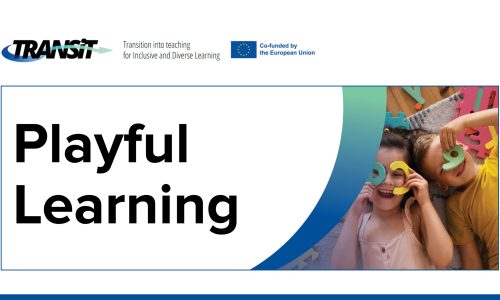

The course is an introduction to playful learning. Three questions will be addressed: What is PL? Why PL? How to get started?
What is PL? Descriptions and definitions of PL vary. One description is: ‘Playful Learning is project-based learning through play, which is characterized by excitement, active participation, meaning, social involvement and experimentation.” (Billund Kommune).[1] Another description goes: ‘A playful approach implies using some of the qualities of play to explore what interests or challenges us – the qualities of creating shared ideas, daring the unpredictable and insisting on meaningfulness’ (Playful Learning. Dk).[2] The key word in the first description Is “learning”; the keyword in the second description is “play”. The first definition comes from an educational provider, having learning as their key objective. The second definition comes from a research project, which is not only committed to the understanding of playful approaches, but also to integrate such approaches into teaching. The descriptions thus reflect two different agendas: Promoting learning (through play) and promoting playfulness – not just as a means of learning, but also as something with intrinsic value.
Why PL? When you ask children about playful learning, they like it! Such an answer could be seen as a strong argument for integrating play and playfulness into how teaching is done. The children’s voices are important; but schools and teachers have reasons for what they do, that transcend the feelings and experiences of the children. From a pedagogical-didactive perspective there are three reasons for integrating playfulness into teaching: Firstly, playfulness can be seen as a means of increasing learning. Its value depends on its utility. From this perspective playfulness is at risk at getting instrumentalized, ending up as a kind of sugarcoating. Secondly, its value can be seen both as a way of cultivating personal and social competences and as a way of expressing valuable qualities such as curiosity, ability to interact, and personal integrity. Thirdly, playfulness can be seen as something with intrinsic value, that is, as something whose value is not to be measured by the effects it has on either learning or character building. Playing has value in itself. It is simply good, enjoyable, captivating, fun and worth it. And here the children seem to agree with the theoretical justification for why ‘we’ should play in shools.
How to get started? There are many ways of getting started. As a teacher you can start using the playful imagination, which goes: ‘… then I was the mother (the crocodile, the driver, etc.) and you were the …!’ You can also use The Playwheel – a simple thinking and planning tool, developed by The Danish Playful Learning Project.[3] The Playwheel helps you to identify the various dimensions and choices involved in a playful teaching situation. The wheel operates with five dimensions, each referring to a basic question: What is our location? (Classroom, nature, etc.). Which materials in a broad sense of the word are needed? (body, toys, equipment, etc.). What kind of play are we going to play? (Rule-based, fantasy- or sense-based, etc.). How should the social setting be organized? (Individual, group, plenum, etc.). Each dimension has several categories, which are named, and one that is not. This leaves room for your own imagination and playfulness.
[1] https://www.billund.dk/borger/pasning-og-skoler/skole/at-laere-gennem-leg-playful-learning/
[2] https://www.billund.dk/borger/pasning-og-skoler/skole/at-laere-gennem-leg-playful-learning/
[3] https://playful-learning.dk/en/try-it/playwheel-for-schools/
8 hours
The e-module consist of four micro-modules, each addressing a core question: 1) What is playful learning, 2) why playful learning, 3) playful learning and the four forms of didactic activities and 4) different forms playfulness (The Play Wheel). Each micro-module includes learning materials (texts, videos, and cases), as well as learning activities (tasks).
